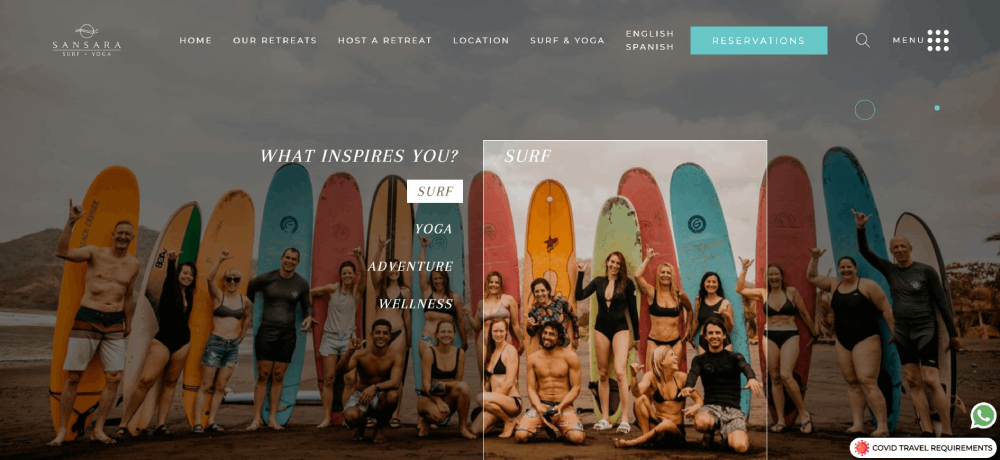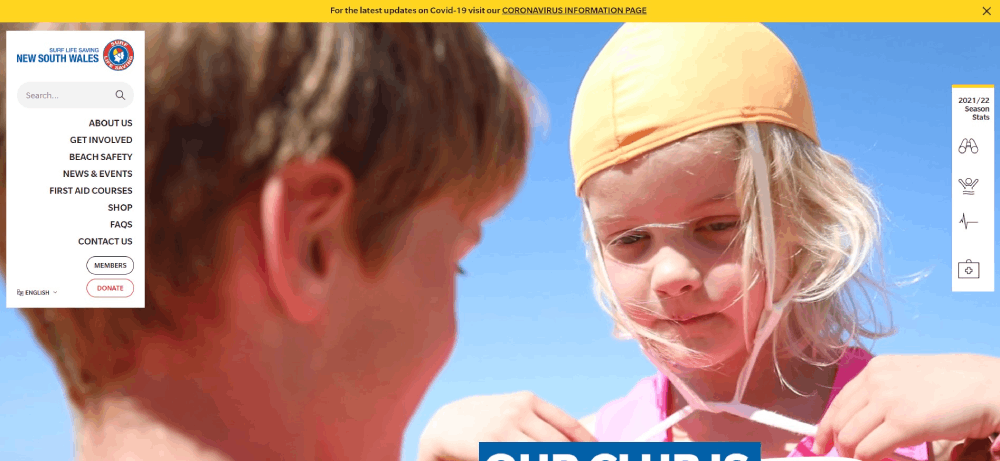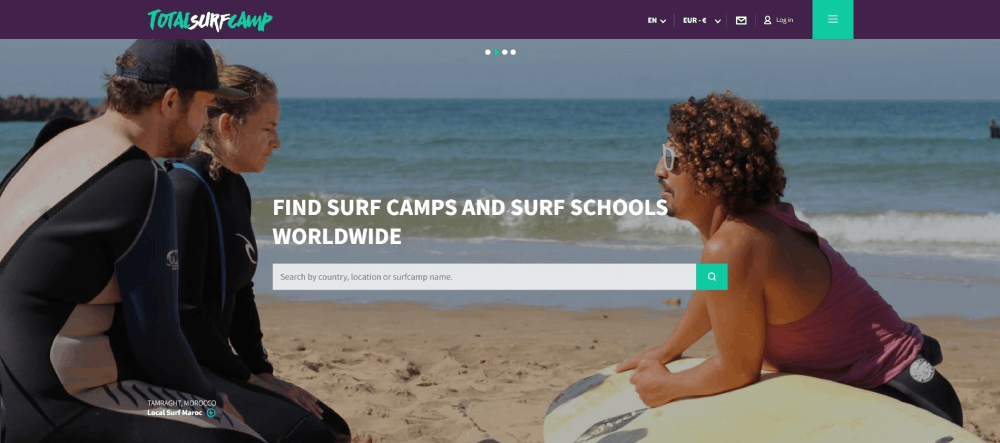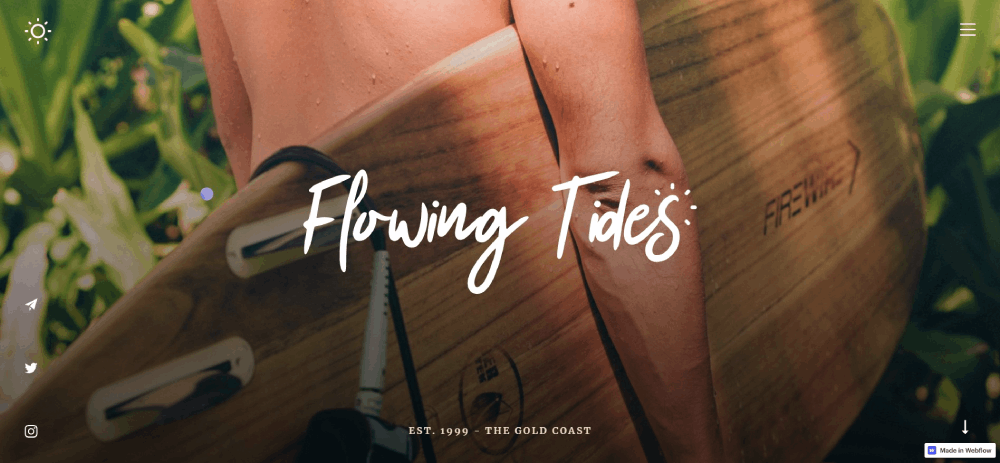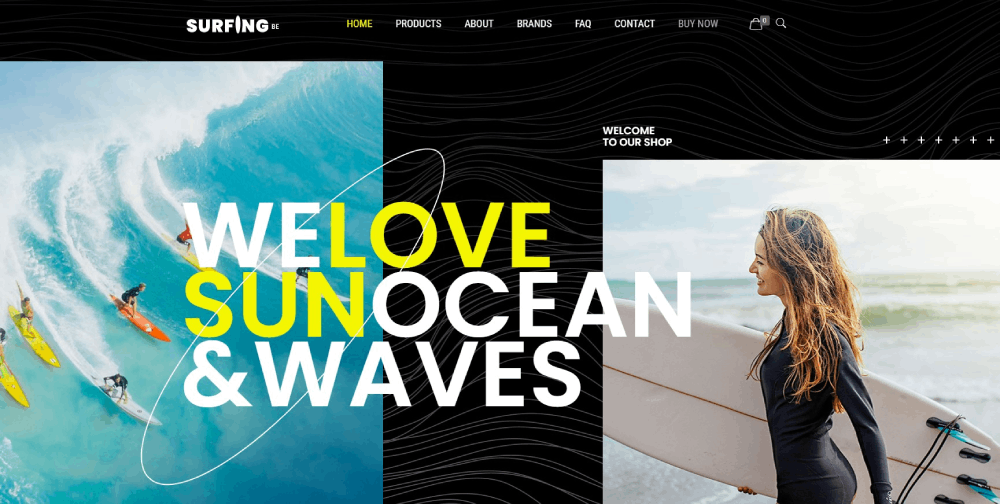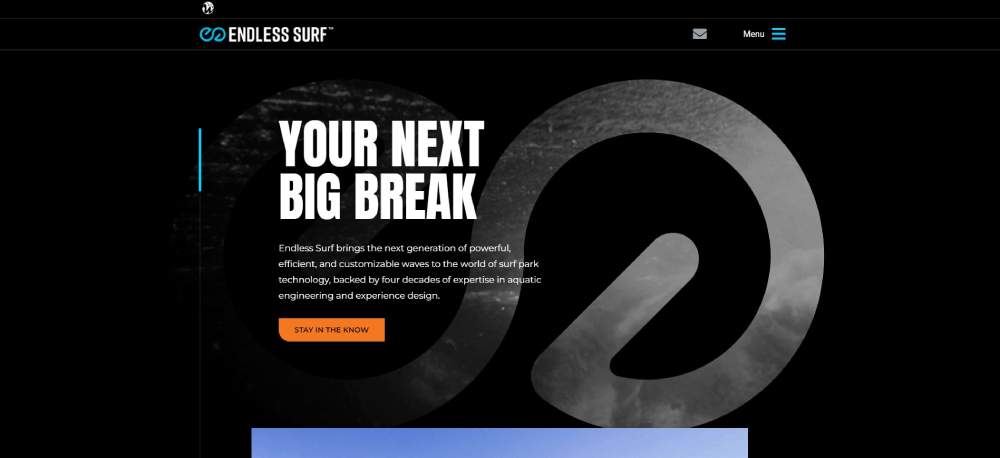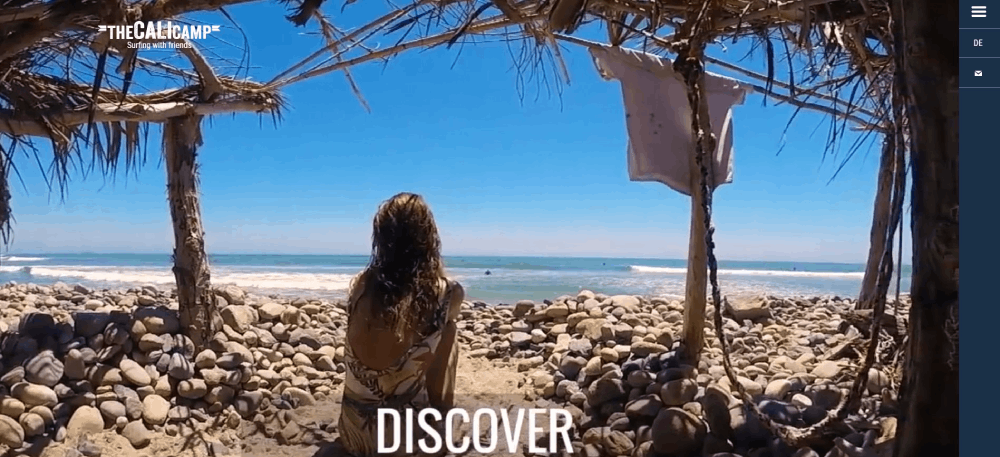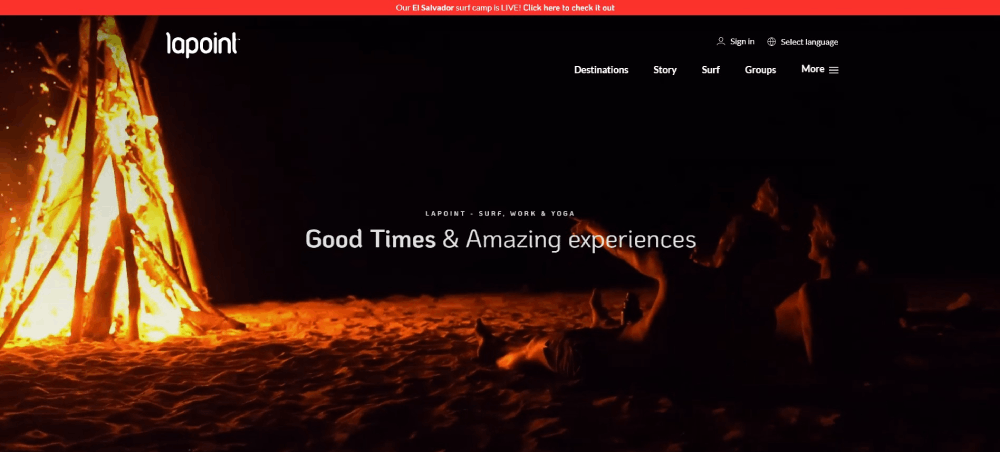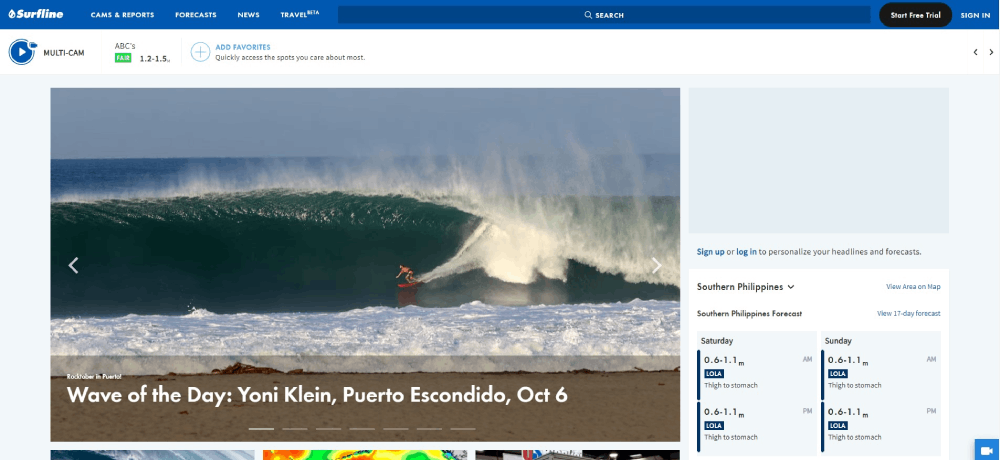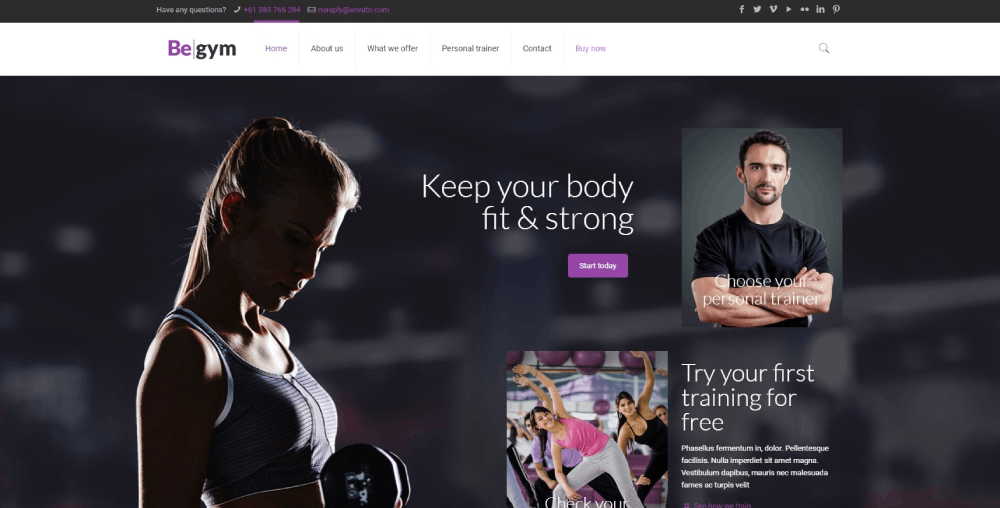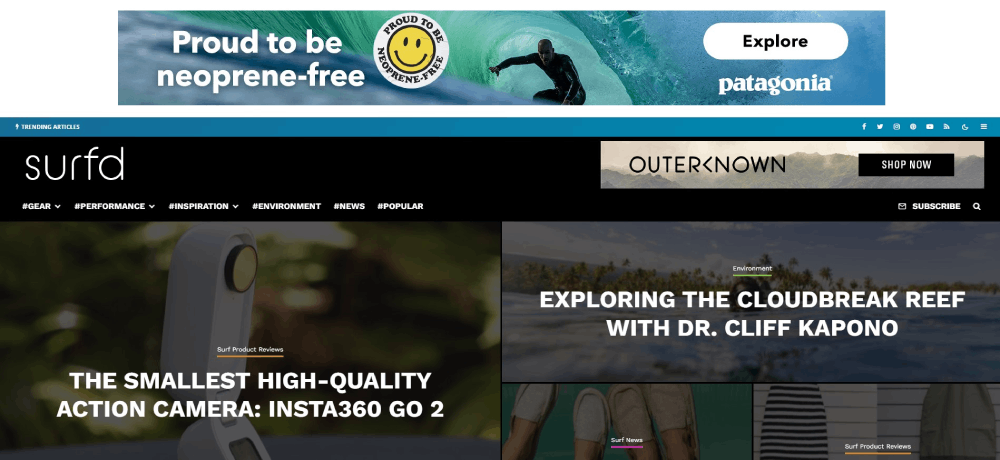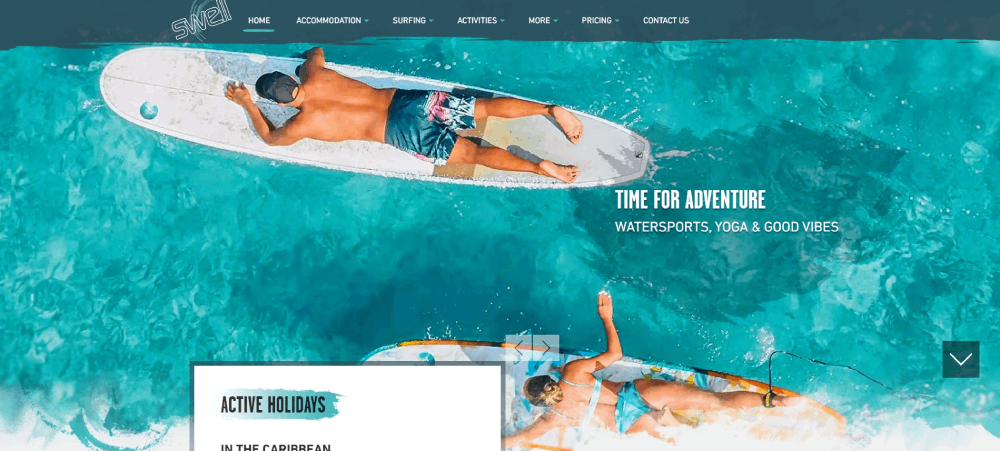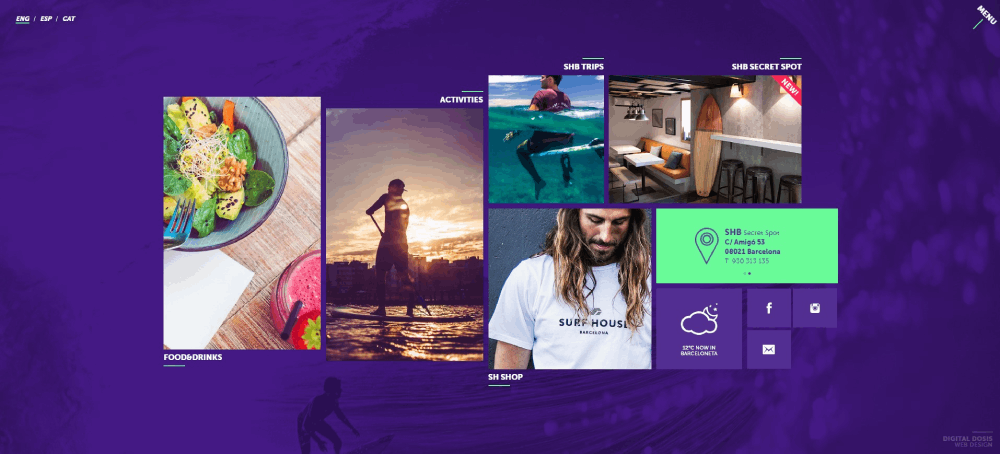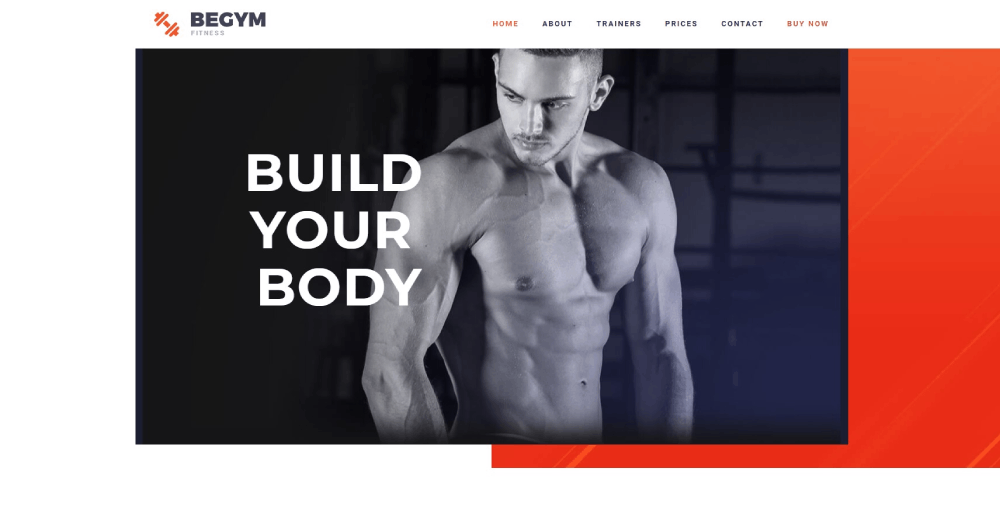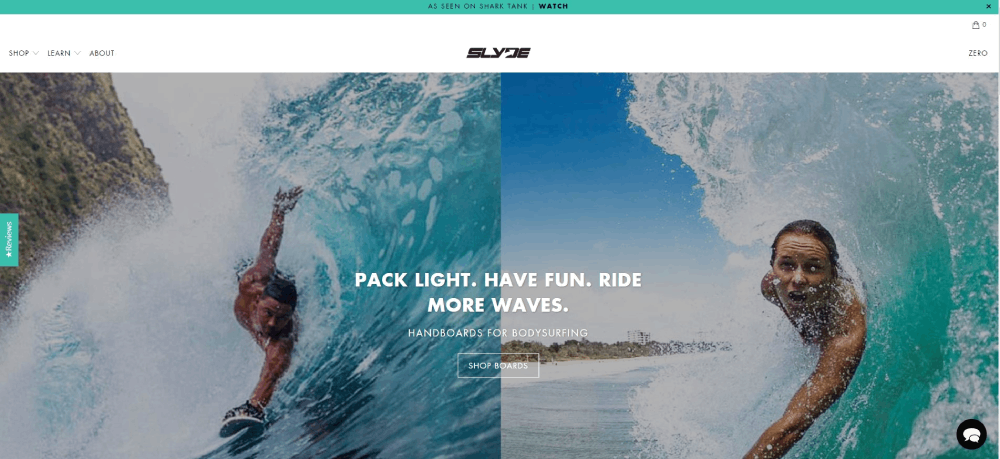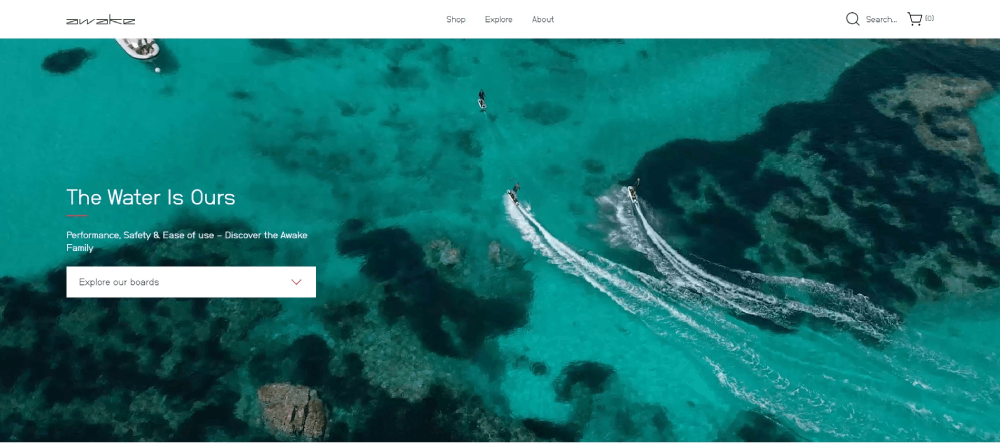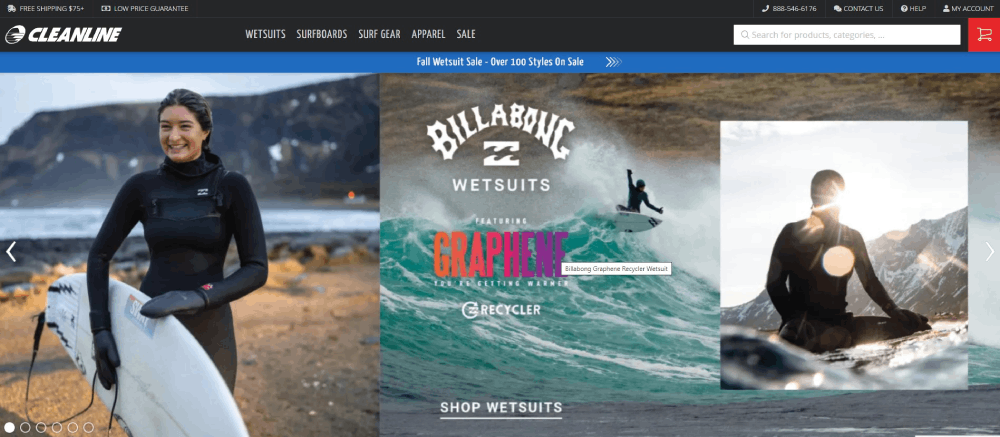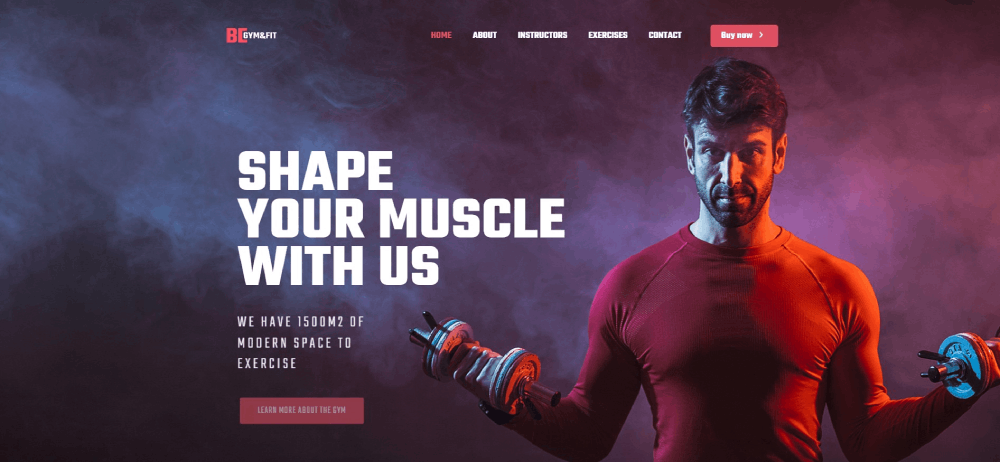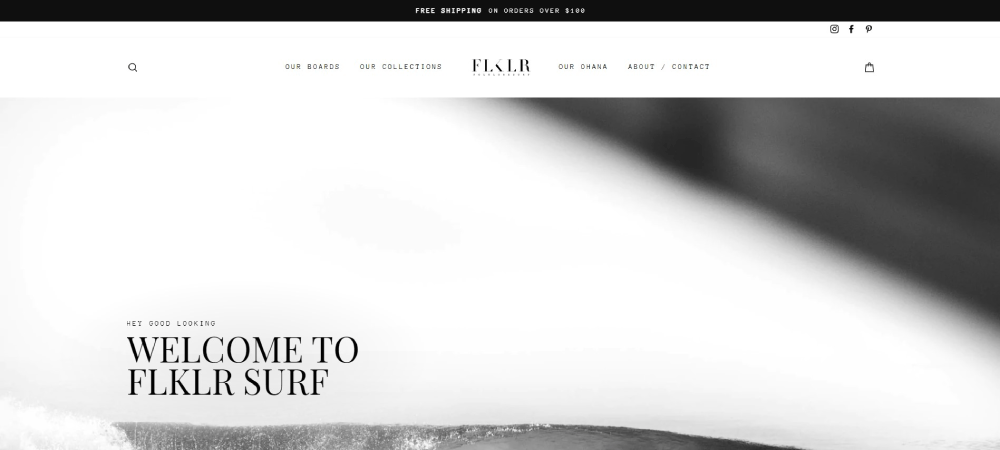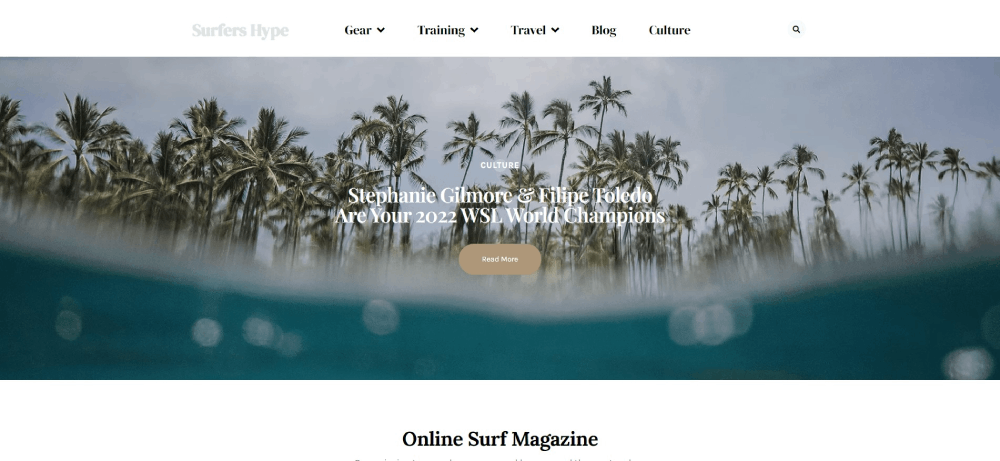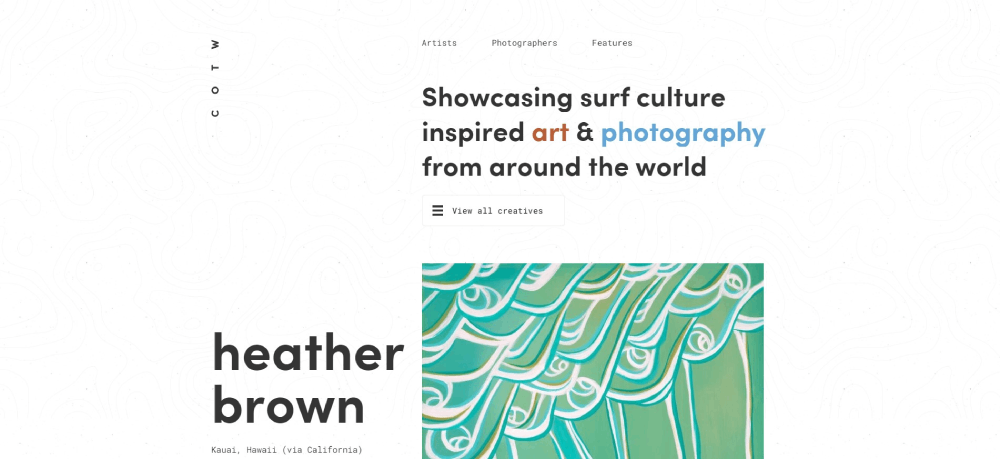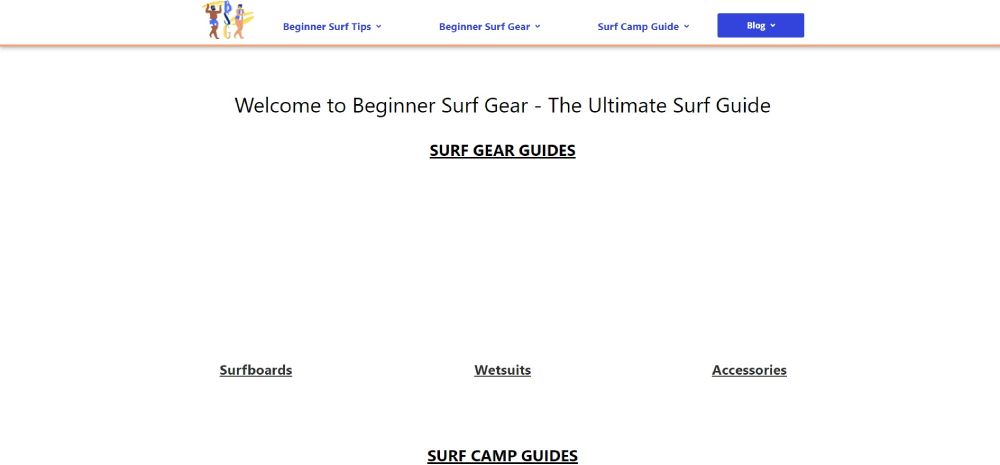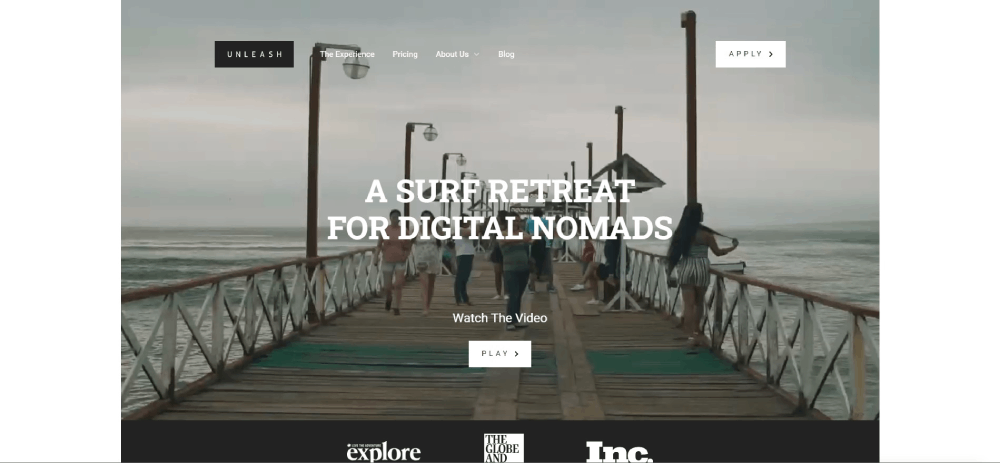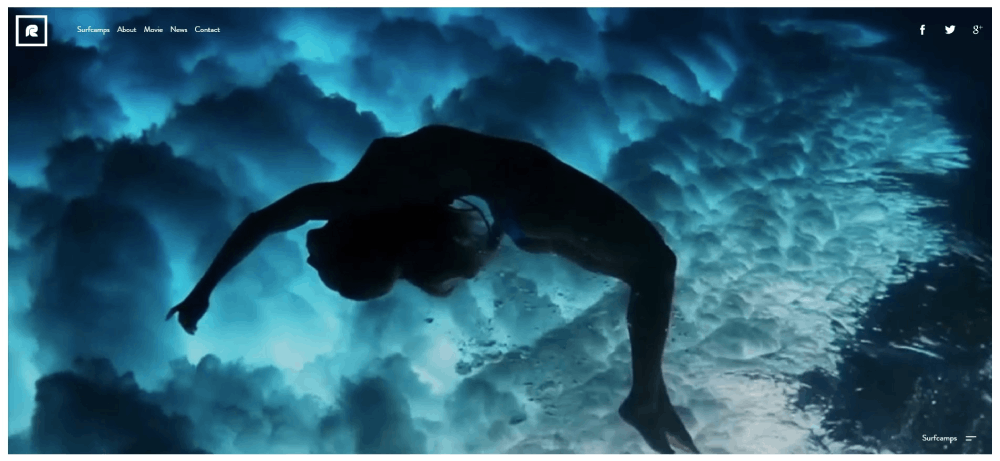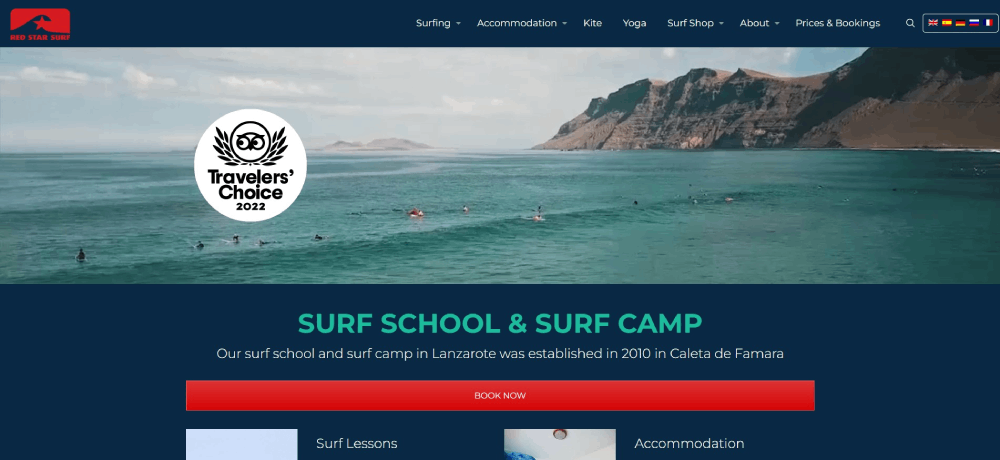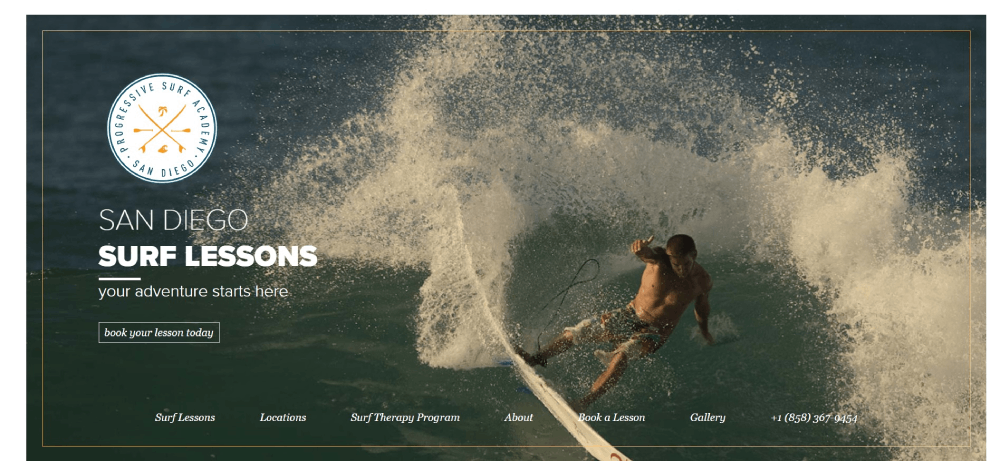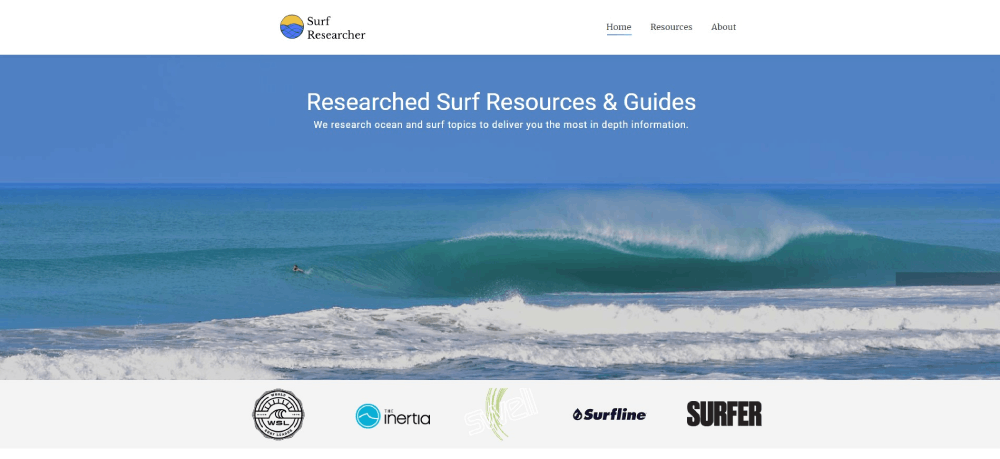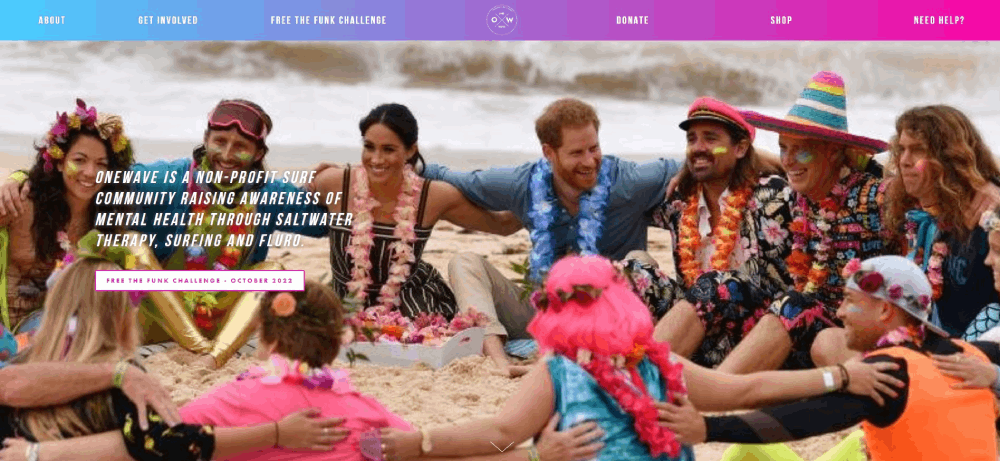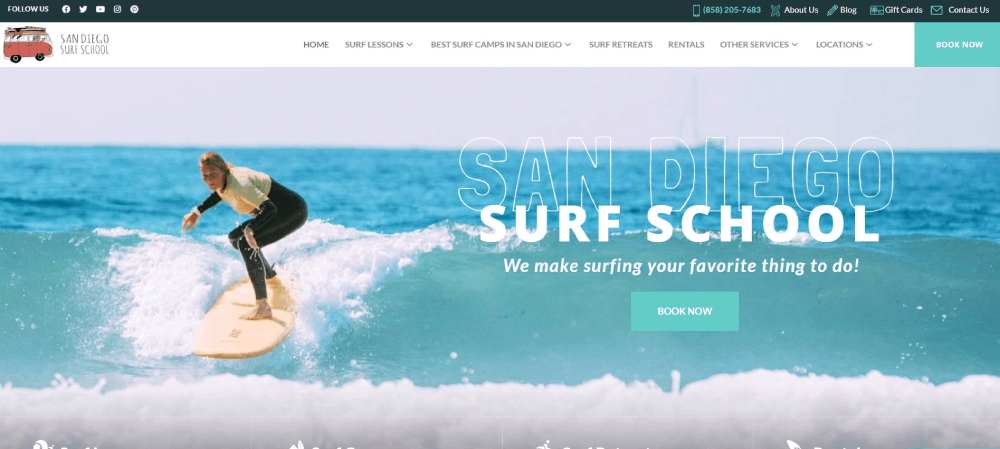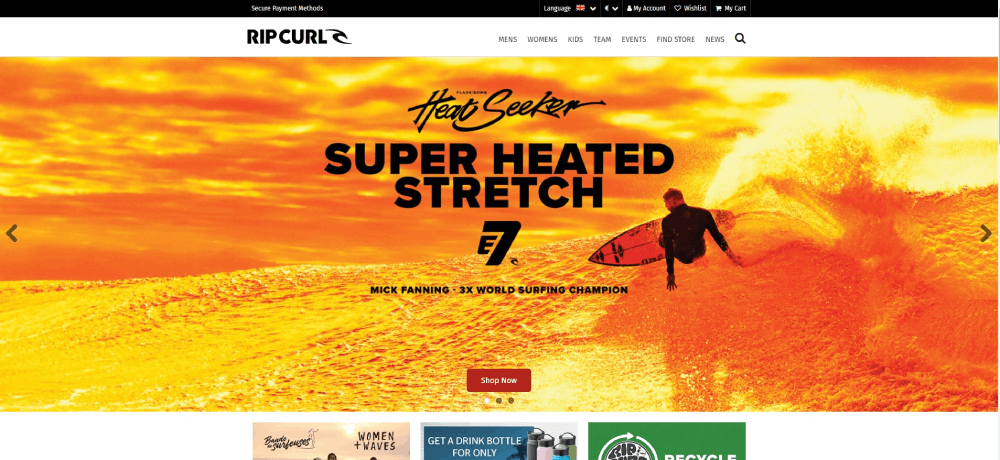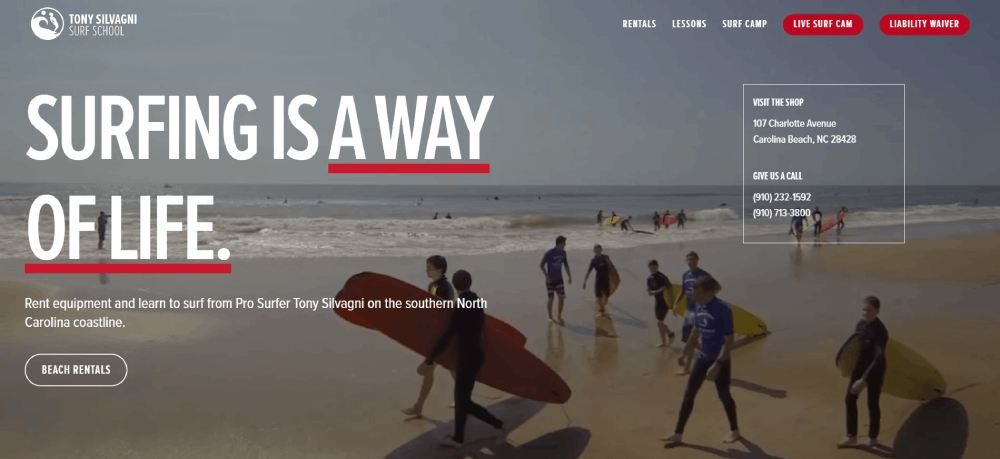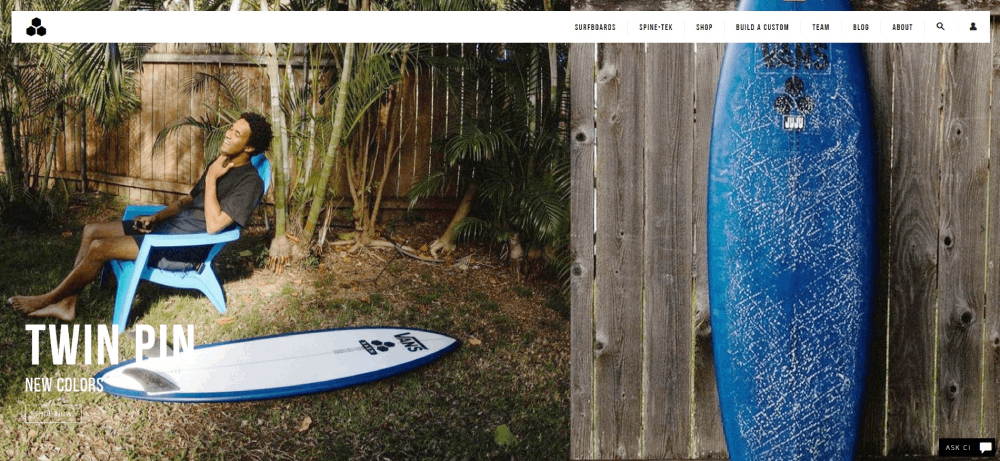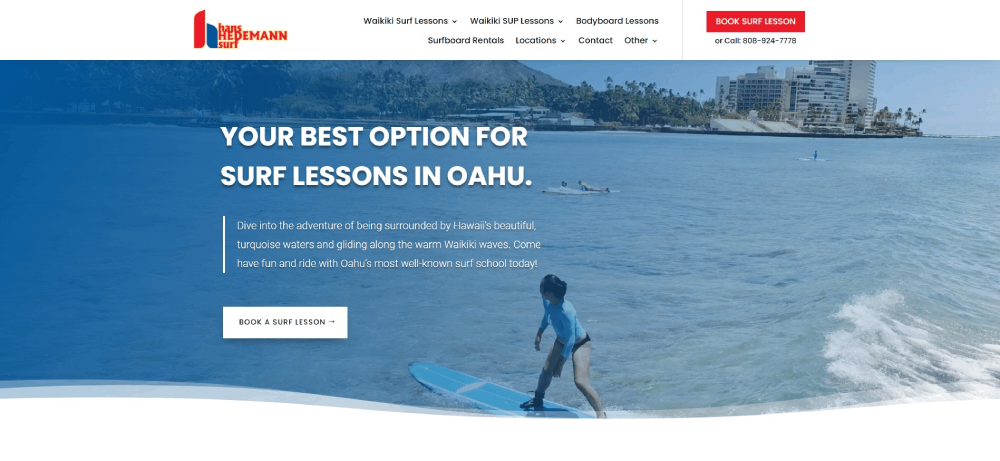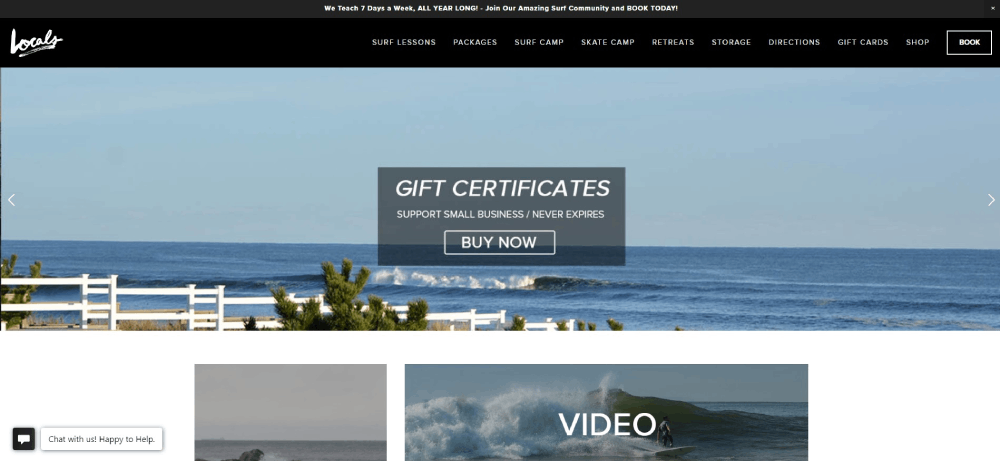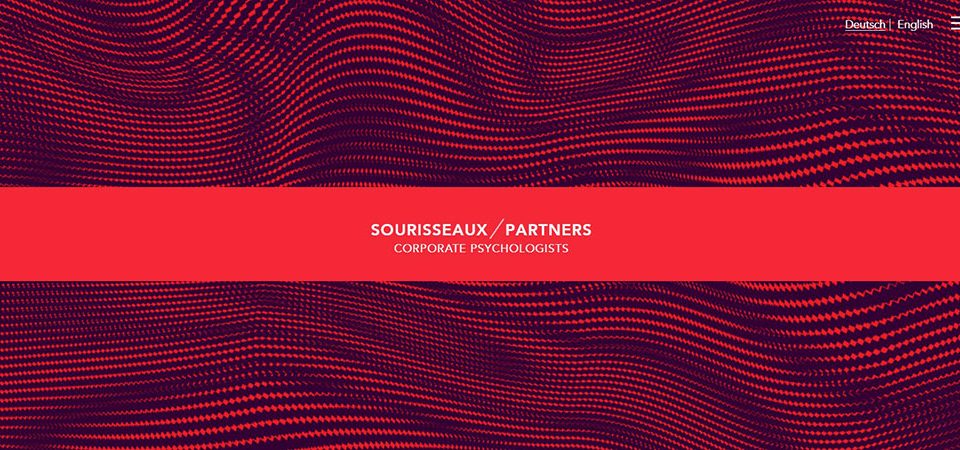
Inspiring Examples of Technology Website Templates
September 24, 2025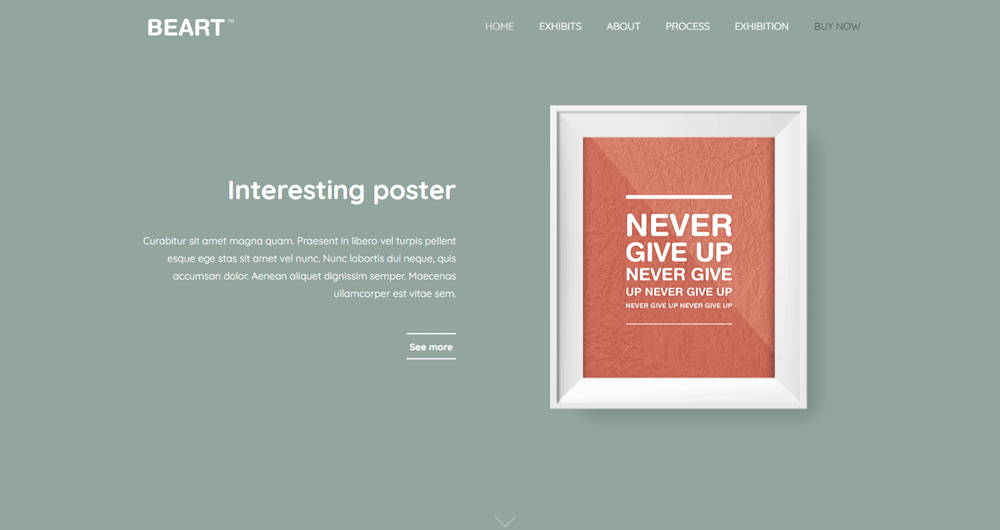
The Best Florist Website Design Examples
October 4, 2025Most surf shop websites look like they were designed during low tide. Generic beach photography, predictable ocean blue color schemes, and navigation that feels like paddling through choppy water.
The best surfing website design examples break these patterns completely. They capture the raw energy of wave riding without falling into tired coastal clichés.
You'll see how surf brands, lesson booking platforms, and beach equipment retailers create sites that actually convert visitors. From minimalist website approaches that let product photography breathe to animated websites that mirror the motion of waves, these examples show what works now.
This guide covers surf camp homepages, surfboard rental interfaces, wetsuit retailer layouts, and coastal resort booking systems. Each example demonstrates specific design choices you can apply to your own surf-related project, whether you're building a Shopify surf store or a WordPress beach lifestyle brand.
Surfing Website Design Examples
Sansara Surf & Yoga Resort
FAQ on Surfing Website Design
What makes a surf website design effective?
Effective surf website design balances authentic ocean sports imagery with fast load times. High-quality wave photography, intuitive surf lesson booking systems, and mobile-responsive layouts matter most. Skip the generic stock photos of beaches. Real surfing action shots and wetsuit product displays convert better than predictable coastal sunset backgrounds.
Which color schemes work best for surfing websites?
Ocean blue palettes are overused. Try coastal gradient combinations with sand tones, seafoam greens, or even dark themed websites that highlight product photography. Quiksilver and Rip Curl often use bold contrasts instead of predictable beach colors. Your surf brand web design should reflect your actual vibe, not just copy what everyone else does.
Should surf websites use video backgrounds?
Video backgrounds work when they show actual wave riding or surf camp activities. But they kill mobile performance if not optimized. Websites with video backgrounds need fallback images and lazy loading. Most surf shop homepages perform better with high-quality static photography than poorly compressed video loops.
What's the best platform for building a surf website?
WordPress with Elementor or Divi handles most surf shop needs. Shopify works better for surfboard retailers with large inventories. Webflow gives you design flexibility for surf photography portfolios. The platform matters less than your actual content structure and wave condition widget integration if you're running a surf lesson business.
How important is mobile design for surf websites?
Critical. Surfers check wave forecasts, tide schedules, and surf camp bookings from their phones at the beach. Your responsive website design needs thumb-friendly navigation and fast loading on spotty cellular connections. Test your site on actual beach WiFi conditions, not just your office connection.
What content should a surf website homepage include?
Lead with your strongest surfing action photography or instructor credentials. Add clear surf lesson booking CTAs, current wave condition displays, and quick access to surfboard rentals or wetsuit inventory. Beach resort websites need location maps. Surf photography portfolios should showcase their best work immediately, not bury it three clicks deep.
How can animation enhance surf website design?
Subtle wave motion effects and scroll-triggered animations work when they don't slow page speed. Parallax scrolling websites can mirror the feeling of riding waves. But skip the overdone animations that make navigation confusing. Animation should add to the surfing experience, not distract from booking that lesson or buying that board.
What mistakes do surf websites commonly make?
Auto-playing music, slow-loading hero sections with massive video files, and hiding contact information. Many surf camp websites also use terrible form design that loses bookings. Bad navigation structures bury surf lesson schedules and pricing pages. Some California surf brands still aren't mobile-optimized, which is absurd in this era.
How do successful surf brands structure their website navigation?
Keep it simple. Shop, Lessons, Locations, About, Contact. Billabong and Volcom use mega menu layouts for large product catalogs. Smaller surf schools need straightforward top navigation with prominent booking buttons. Don't make people hunt for your wave forecast integration or tide schedule display.
What role does typography play in surf website design?
Bold, readable fonts that work on bright beach screens matter more than trendy script typefaces. Websites with good typography balance personality with legibility. Surf lifestyle brands can use custom fonts for headers, but body text needs clarity. Your surf shop visitors are squinting at phones in sunlight, so contrast and size actually matter here.
Conclusion
The surfing website design examples in this guide show what actually works beyond generic beach photography and predictable layouts. Surf camp booking systems, surfboard rental interfaces, and coastal apparel stores all face similar challenges with mobile performance and visual authenticity.
Your surf brand doesn't need to follow the same Billabong or Hurley template everyone copies.
Consider how creative websites in other industries solve similar problems. Wave forecast widgets and tide schedule displays matter, but so does your overall website layout strategy. Hawaii surf schools and Bali surf camps approach design differently because their audiences expect different things.
Start with one strong hero section featuring real surfing action shots.
Build your surf lesson booking flow, add clear call to action buttons, and test everything on actual beach WiFi. The Surfline interface works because it prioritizes wave condition data over fancy animations. Your site should do the same with whatever matters most to your specific audience.
If you enjoyed reading this article about surfing websites, you should check out these with hairstylist websites, florist websites, wedding photographer websites, and massage therapist websites.
We also wrote about similar topics like chiropractic websites, pizza websites, optometrist websites, furniture website design, coaching websites, gym website examples, and plumber website designs.

